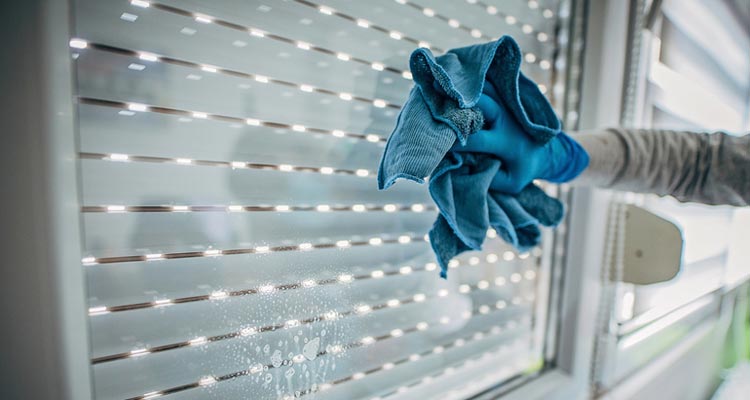Have you ever heard of window cleaning scrim? Do you know what this material is and how it is used to clean windows? While people in Europe have more commonly used scrim for their glass panes for more than 50 years, people in North America are newer in exposure to this material and its term.
Scrim is a woven, lightweight material used to buff or polish the surface of the glass. It is typically used after chamois, which loosens and brushes away dirt, or a squeegee that cleans the window surface.
Other uses for scrim outside of window washing is for theatre purposes or as reinforcement in building construction and canvas-making. During World War II, this lightweight woven fabric was used to reinforce shop windows at street level, to prevent splintering during bomb blasts. Scrim has been used to make curtains, upholstery, and bookbinding. The terms scrim and cheesecloth are often interchanged for this highly lightweight cotton or flax textile.
Why Use Scrim?
Although scrim has been around for centuries and used for many purposes, few people seem to know how to use it for cleaning windows. Many people claim to go through dozens of scrim clothes per day for multiple car items of washing. But the reality is that this material can last longer for auto detailing and glass cleaning than you might think.
Scrim works well for auto detailing and glass cleaning, as mentioned above. It also works well for wiping away excess water when squeegeeing glass, such as from the window or the squeegee blade, itself.
Scrim works so well for windows because it does not leave a trail of lint. You can use it dry to polish cleaned glass and remove any streaks or residue. The fabric generally stays clean, and you only have to allow it to dry between uses. If you notice your scrim leaving smudges or smears on glass, simply machine washes it at a low temperature with very little detergent. Allow it to air dry, and it is as good as new!
Cleaning Windows Using Scrim
Before using your scrim, dunk the material in your wash bucket and then wring it out until it damps but not dripping any water. To wring it out, you can fold the material over to bring opposite corners together. Then stretch it out and create a rope by spinning the fabric while holding one tip. Pull the two ends together to make a half-length, thicker rope. Twist this shorter rope tightly to wring the material free of water.
When water stops dripping during the wringing, it is perfectly damp. If you notice some stubborn water accumulating after you wring the material, forcefully thrust the material toward the ground in “popping” or whipping motions to release more fluid.
After this wringing, you may find it difficult to unravel your scrim. If you hold it at one corner and crack the rope like a whip away from your body, it will start to unravel. The material is then ready for polishing, detailing, or cleaning your windows.
Scrim is not used for wet wiping windows. Instead, use it for polishing after you squeegee or otherwise wash your windows. The material removes cleaning residue and water from a cleaned window, polishing to all-over clarity.
For best results, use a chamois or squeegee for cleaning your windows and window cleaning scrim for detail work and polishing. While a chamois is used underneath an open palm and extended fingers, a scrim is used with one fingertip and the thumb holding it in place. This difference in how the material is used indicates its purpose for detailing and polishing areas already cleaned.





